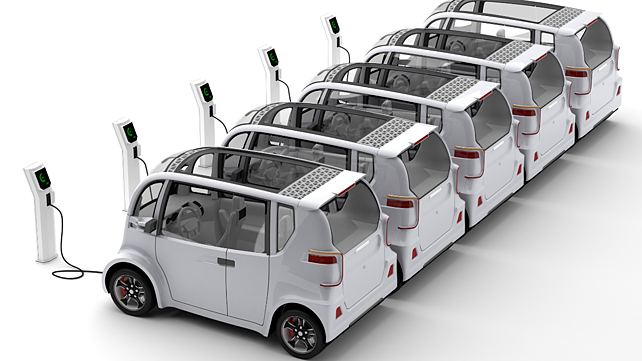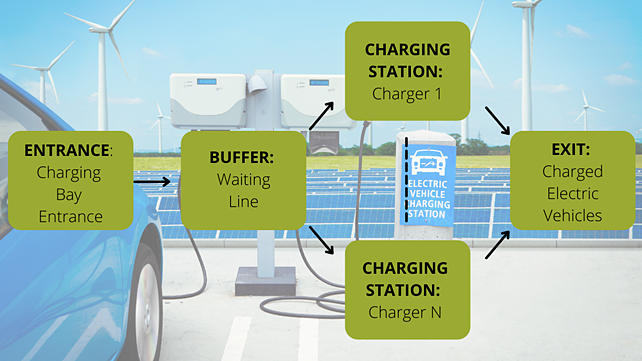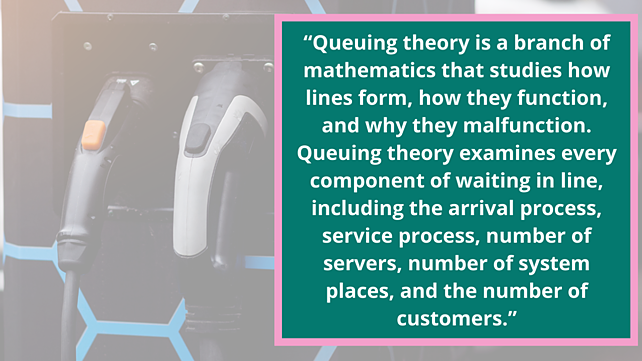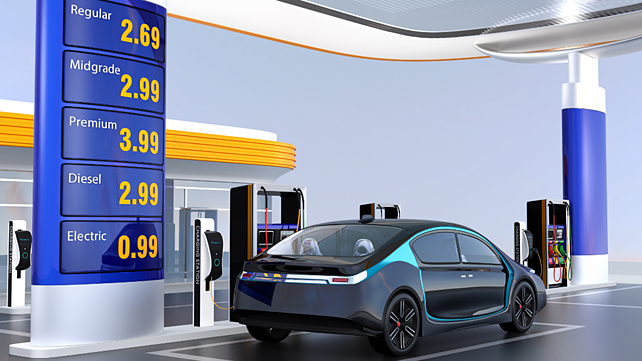
The article has been co-authored by Akanksha Golchha
The cities in India are often considered the fulcrum of economic development attracting people and profits. But cities are also becoming the epicentre of worsening air quality that is significantly impacting the human health and the environment. According to the World Air Quality Report 2020 prepared by IQAir, 22 of the 30 most polluted cities in the world are there in India [1].
The fossil fuel-dependent transport sector is responsible for 13.5% of India’s GHG emissions and is one of the leading factors for air pollution in these cities [2]. Thus, decarbonising transport through electrification is of paramount importance.
Over the last few years, the central and state governments have undertaken a plethora of initiatives to mainstream electric vehicle (EV) adoption. These initiatives include Faster Adoption and Manufacturing of (Hybrid) Electric (FAME) Vehicles scheme, Performance Linked Incentive (PLI) scheme for auto manufactures, state-level EV policies, etc.
Remarkably, these initiatives have started reaping benefits. The EV sales of September 2021 saw a substantial jump of 222% in comparison to the previous year, albeit on a low base [3]. With the increasing uptake of EVs, the classic “chicken and egg” conundrum is unfolding. The EV sector presents immense business potential to multiple stakeholders, most prominently through the deployment of charging stations.

Given how most cities are structured in India and the available electricity distribution infrastructure, the possibility of EV owners installing their personal EV chargers is constrained due to high capital costs, limited distribution infrastructure capacity and land availability. As a result, multiple ownership models for EV charging Infrastructure have been fostered, such as private; semi-private; public. As the segment is continuously evolving, there is a possibility of hybrid models getting mainstreamed as well.
The Problem
Though lucrative, the installation of charging stations is a novel business opportunity, raising several questions. How many chargers to install? What should be the capacity of chargers? For how long the EV owner would be willing to wait to access the charger? What would be the land resources (parking spots) to be blocked to facilitate ease of waiting for EVs?

Figure 1 depicts a typical charging bay along with critical areas for the charging bay owners to peruse before making a final investment decision. Pertinent are choice of land parcel with appropriate entry and exit points from the approachable roads, parking spaces for the EVs in waiting line, number of charging stations, and utility areas.
Waiting in queues is a key concern. EVs will queue up at the bay as it is highly unlikely that the EVs will arrive at a constant evenly paced rate and even their charging time will vary. Besides, over time, the waiting line will continually increase or decrease in length.
Staying in queues is one of the most common occurrences in everyone’s life. As per an analysis, subconsciously people spend around 235 days of their lives waiting in lines [4]. Several behavioural studies have indicated that customers equate the quality of service with rapid service. Thus, it is paramount for the EV charging businesses to identify solutions resulting in reduced waiting time.
In theory, the EV charging bay owners can reduce waiting time and provide faster service by two approaches – increasing the number of chargers at the bay or increasing the power capacity of chargers. Both approaches, however, entail higher costs, both capital and recurring. This also has implications on the trade-off between the cost of improved service and the cost of making customers wait.
Through experience and data analysis, we can identify the average rate of EV arrivals and average time to charge EVs, in the long run. However, the need for upfront investments for charging stations, necessitates the need for innovative approaches with the dual objective of ensuring the financial feasibility for the charging bay owners and ensuring consumer satisfaction.
The “Queuing” Solution
We propose that a queuing solution can help integrate multiple decision parameters for the charging bay owners and support them in developing the most appropriate investment models. We propose to use the queuing solutions for the following parameters:

First, for charging bay owners, it will be important to quantify the calling population seeking the services of the bay. This is the quantification of actual customers that own an EV in the area. This calling population will balloon dramatically as EVs become mainstream and considering this in the planning process will be beneficial in the long run.
Second, the rate of arrival of EVs at the charging bay needs to be estimated by studying the already operational charging bays that can provide historical data. Tools from transfer learning and domain adaptation will likely prove essential in low-data settings. It is important to underscore that the arrivals will follow a probability distribution. However, years of research and practical experience of people in the field of queuing have alluded to the fact that the arrival rate at service facilities usually follows a Poisson distribution.
Third, the service rate or time needed to charge an EV is a random variable and will follow a probability distribution as well. This is because EVs entering the bay will each have a different State of Charge (SoC) and will thus require different times for complete charging. At the same time, there will be a few customers, who will be time-bound and will only be able to charge their EV for a limited duration, no matter the final SoC of the EV.
For prudent decision making, taking into account the above three parameters, we propose a multi-server waiting line analysis to identify the average number of EVs that can access the charging bay, average number of EVs unable to enter the bay (missed business opportunity), service-level of the bay, average queue length for the EVs, average waiting time for the EVs, and the total number of EVs served in a day, etc. for a different number of chargers in the bay.
A sensitivity analysis will support the assessment of the duration of operation of the charging bay. This kind of analysis will allow the owner to conduct a cost-benefit analysis for prudent decision-making.
Since the aforementioned approach is limited to one vehicle segment and with one charger capacity, going forward, other areas can be integrated for a more precise analysis.
First, explore the installation of chargers of varied capacity to further optimise for the charging bay owner and the customers. Second, the introduction of pre-booking by the charging bay owners. In this case, the customers will be taken according to a pre-arranged schedule, regardless of when they arrive at the facility. Third, an analysis comprising of a combination of several vehicle segments will allow identifying the most viable plan for the charging bay.

Conclusion
The assessment will help address multiple challenges that are prevalent in the sector and is hindering the investments in the charging bay business. They include:
Capacity assessment – Resources required for installation of a financially viable charging bay in terms of land parcel, number and type of charging stations, charging points, etc;
Financial assessment – More accurate forecasting of data to develop project financing plants and ascertain critical parameters such as IRR, payback period, etc;
Informed decisions – Policy makers, distribution companies and local government bodies can help take quicker decisions regarding infrastructure augmentation and city level panning;
Financiers – The confidence of financing community would increase in the sector because of scientifically forecasted model and assessment.
With the use of the queuing solution, the intertwined dimensions associated with EV charging business models will be addressed to ensure that charging infrastructure is affordable, accessible and available to large set of users.
References:
[1] https://www.iqair.com/in-en/world-most-polluted-cities
[2] https://climateactiontracker.org/documents/832/CAT_2020-12-09_Report_DecarbonisingIndianTransportSector_Dec2020.pdf
[3] https://vahan.parivahan.gov.in/vahan4dashboard/
[4] https://www.dreams.co.uk/sleep-matters-club/your-life-in-numbers-infographic/#:~:text=We%20spend%20235%20days%20of,while%20men%20only%20take%2046
About the Authors: Jaideep Saraswat works as Senior Manager – Clean Power & Electric Mobility at Vasudha Foundation. He is an avid climate and clean energy researcher with keen interest in electric mobility, and green hydrogen. Akanksha Golchha is a development sector professional and her current work focuses on designing programmes to enhance energy access in India focusing on health, education and livelihoods.